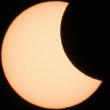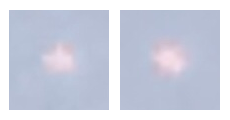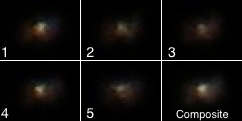Animated transits of Moon and Venus
Posted by Wesley on
2012 was a rare year where I was able to photograph two instances of celestrial bodies blocking the Sun. It's also the year I left this blog without updates, so I skipped on sharing what I caught, at this place. I'm going to rectify this problem with this post.
After I uploaded the composite photo of the partial solar eclipse yesterday, I remembered that I also made an animated GIF version of it. The left one is this. If you click the thumbnail, you'll be able to see the 24 photos in succession.
The right one is the Venus making a transit of the Sun, which is quite rare - the next one will happen in 2117. I was in Madison, Wisconsin at the time, and was able to catch the event as the Sun was setting into the western sky. It was very cloudy that day, but I was able to make do and catch enough photos to make an animated version out of it. Click the thumbnail to see it in full glory.
- Partial solar eclipse
Camera: Canon EOS 450D + Tamron 18-270mm Di II VC PZD
Time: 2012-05-21 06:51 - 08:46 KST (UT+9)
Composition: 24 frames, 5-minute interval
Location: Seoul, Korea
- Transit of Venus
Camera: Canon EOS 450D + Tamron 18-270mm Di II VC PZD
Time: 2012-06-05 18:35 - 20:23 CDT (UT-5)
Composition: 12 frames, 10-minute interval
Location: Madison, Wisconsin, USA
After I uploaded the composite photo of the partial solar eclipse yesterday, I remembered that I also made an animated GIF version of it. The left one is this. If you click the thumbnail, you'll be able to see the 24 photos in succession.
The right one is the Venus making a transit of the Sun, which is quite rare - the next one will happen in 2117. I was in Madison, Wisconsin at the time, and was able to catch the event as the Sun was setting into the western sky. It was very cloudy that day, but I was able to make do and catch enough photos to make an animated version out of it. Click the thumbnail to see it in full glory.
- Partial solar eclipse
Camera: Canon EOS 450D + Tamron 18-270mm Di II VC PZD
Time: 2012-05-21 06:51 - 08:46 KST (UT+9)
Composition: 24 frames, 5-minute interval
Location: Seoul, Korea
- Transit of Venus
Camera: Canon EOS 450D + Tamron 18-270mm Di II VC PZD
Time: 2012-06-05 18:35 - 20:23 CDT (UT-5)
Composition: 12 frames, 10-minute interval
Location: Madison, Wisconsin, USA





